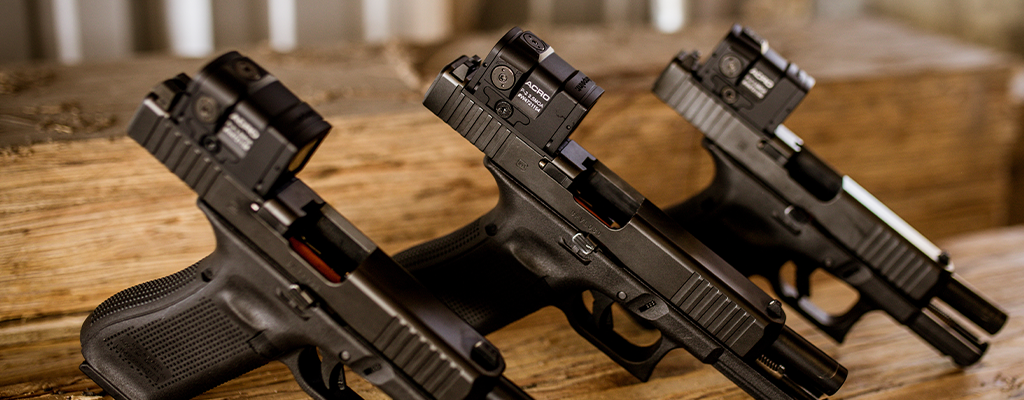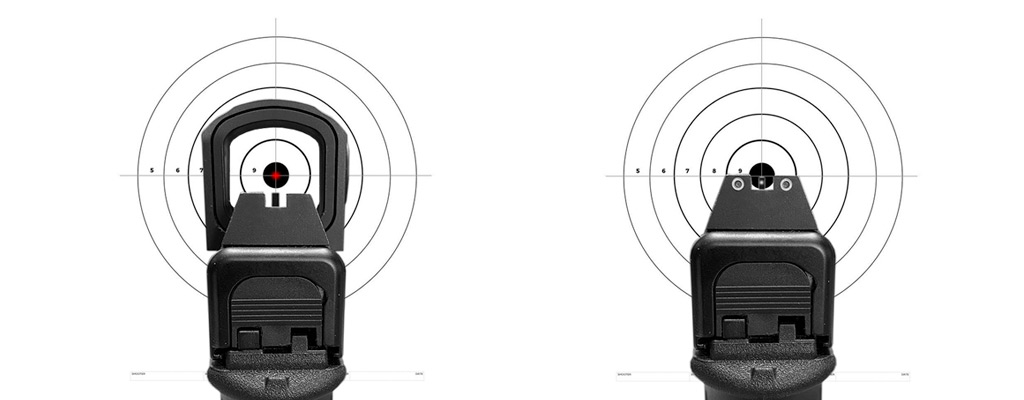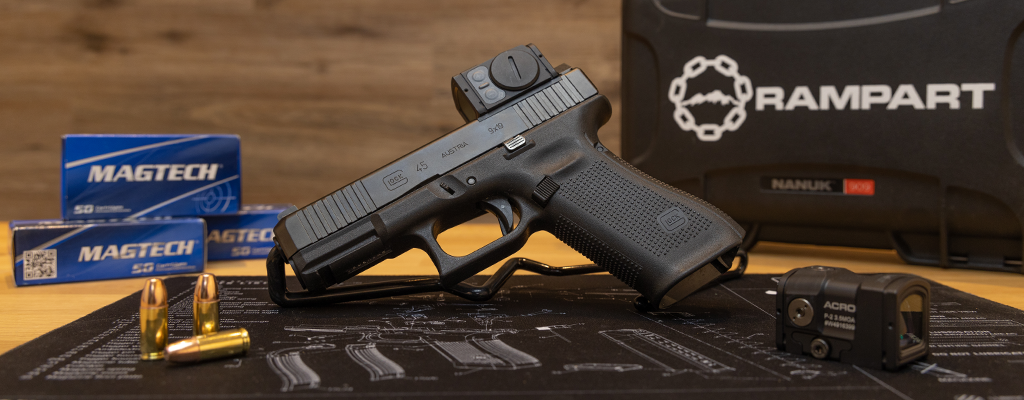THE NEXT EVOLUTION OF LAW ENFORCEMENT PISTOLS
The benefits that police are seeing by adapting miniature red dot sights

The AIMPOINT ACRO-P2 (pictured above) is a popular example of Miniature Red Dot Sights (MRDS) being adopted by modern law enforcement.
MRDS have been used by special operations forces, tactical teams, and in competitive shooting sports for years. Now with further advancements in durability, battery life, duty holster compatibility and OEM duty pistol compatibility (GLOCK MOS), MRDS have quickly become a viable option for general duty use. As more agencies begin to adopt MRDS optics, the true benefits to usability and police user safety are becoming very apparent.
“In addition to accuracy advantages, MRDS are able to better compensate for physiological responses during high stress situations.”

A comparison between an MRDS sight picture and traditional irons.

RAMPART offers a complete line of MRDS optics, as well as other pistol attachments and ammunition.
QUICK FACTS : WHY your agency should consider MRDS for general duty Policing:
- Faster, and more accurate target acquisition
- Improved usability under stress
- Improved situational awareness while on target
- More accurate follow up shots
- More accurate shots on moving targets
- Improved low light accuracy
- Greater accuracy for ageing police users or those with vision issues
For more information on MOS optics for duty and military use, contact Rampart today.
References:
1) Autonomic Nervous System, Flinders University, Australia Dr. Bill Blessing, Dr. Ian Gibbins (2011), The Integrative Action of the Autonomic Nervous System: Neurobiology of Homeostasis, Dr. W.W. Jänig, Cambridge University (2006)
2) Amodal Completion,Perception and Visual Imagery, Clotilde Calabi, Interpolation and extrapolation in human behavior and neural networks, J Cogn Neurosci. (2004)
3) Heuristics, servants to intuition, in clinical decision making, Jane Cioffi (1997)
4) Officer-Involved Shootings: What We Didn’t Know Has Hurt Us, Thomas J. Aveni, M.S. (2003)
STAY UP TO DATE WITH THE LATEST CONTENT FROM RAMPART
Get Latest News Releases, Articles & Brand Updates Directly In Your Inbox.
